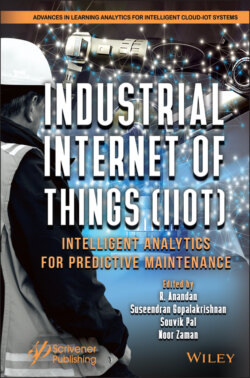Читать книгу Industrial Internet of Things (IIoT) - Группа авторов - Страница 59
2.7.1 Blockchain Technology
ОглавлениеBlockchain is a technology employing an individual or organization to maketransactions on a system without the requirement of any third man. The transactions made on blockchain are fullysecured. The solid PC codes utilized in blockchain confirm that no record of the transaction can be changed. Blockchain novelty has been made use of by plentifulfinancial and governmental institutions, business people, customers, and industrialists. This is one of the most typical IoT outlines to manufacture specialized devices.
BC is a distributed database for multitude of records. BCT normally applied for financial transactions, for the Bitcoin Cryptocurrency. The distributed BCT records transactions without exclusion with the aid of online ledger system. BCT is a decentralized, stable, transparent, consistent, and quickly reacting to public as well as private. Because of the accomplishment of Bitcoin, individuals presently commence to apply blockchain technology in abundant fields, for example, casting a ballot, clinical treatment flexibly chain, budgetary market, and security for IoT [50]. BCT creates secure mesh networks, and IoT devices interrelate to evade threats like impersonation, device spoofing, etc.
The system will gauge up to support a cumulative volume of devices without need for added resources [51]. There is a vast enthusiasm for “Ethereum, as a blockchain” technology for what is to arrive.
Exploring potentials of blockchain wherein the blockchain is utilized to offer a privacy-retaining IoT contracting platform. Explicitly, the information extracted by IoT devices is available from peripheral service providers and while at same instant assuring obscurity of IoT devices and producing profits for device owners. As it assures defense against data meddling, it can be efficaciously used to authenticate reliability and legitimacy of software. For example, the technology is employed to authenticate the diverse firmware sorts implanted on IoT system devices. It is also used in smart homes and industrial set-ups to guard indigenous IoT networks then normalize traffic across distributed verification tools.
Also, it is shown that blockchain unavoidably produces calculation overheads because of mining algorithms that finally rises both consumption of energies as well as processing delays. Just in case, any malevolent nodal point retains minimum of 51% of general computing power, it may be able to exploit the consensus contrivance and disrupt the reliability and dependability of the entire network.
